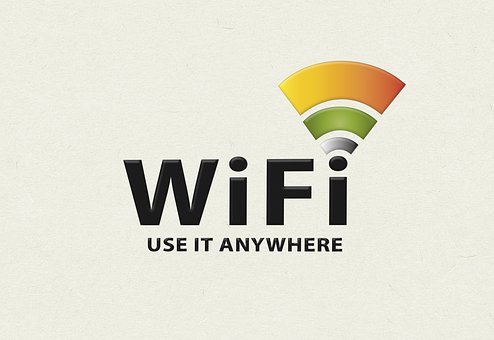On our most recent IoT Podcast episode, Will called in to our voicemail hotline with a question about Wi-Fi 6. He wants to know if the newer wireless home network standard is sufficient for IoT. Specifically, he’s wondering if Wi-Fi 6 has the bandwidth and low latency capabilities in his smart home. Will uses Zigbee and Z-Wave devices along with the computers, phones, and tablets in his home and plans to add eight connected cameras in the future.
I can understand why Will is asking about this because it sounds like he has, or plans to have a large number of IoT devices in his house. However, Wi-Fi 6 is actually the ideal solution in this case for several reasons.
First, Wi-Fi 6 is the marketing name for the 802.11ax wireless protocol. And it brings a number of benefits over Wi-Fi 5, or 802.11ac wireless networks. Each of the 20MHz channels can be split into 256 sub-channels with Wi-Fi 6, or four times as many as Wi-Fi 5. This helps improve tuning in the case of interference and it can boost throughput speeds as well since sub-channels can be grouped together to carry more data simultaneously.
Then there’s the important issue of latency or the amount of delay before a smart home device responds when you change its state. Seeing a one-second delay between remotely turning on a smart bulb and actually seeing it light up is an example of 1,000 milliseconds of latency. Looking at the latest Wi-Fi 6 router specifications, I’ve seen advertised latency of between 100 and 200 milliseconds, which is a vast improvement. And I can confirm from my own testing of a Wi-Fi 6 router that my smart home reacts much faster than it did with a Wi-Fi 5. And that’s with Wi-Fi 5 client devices in my home; the standard is backward compatible.
In terms of how many wireless devices you can add to a Wi-Fi 6 network, it depends on the specific router. However, the one’s that I’ve researched have all supported at least 120 client devices. Some suggest upwards of 160 devices. So if you’re buying a Wi-Fi 6 router, you’ll want to check the technical specifications for this. Regardless, in the majority of consumer smart home scenarios, Wi-Fi 6 should be capable of supporting as many devices as you have.

Will did mention Zigbee and Z-Wave devices too, and for that, he’ll need a bridge or hub. That effectively removes them from the Wi-Fi 6 equation because these devices don’t use Wi-Fi to connect to the home network. Instead, they use Zigbee and Z-Wave as their names suggest. If the bridge can be hardwired to a Wi-Fi router, this shouldn’t be a concern at all. Even wirelessly connected to a Wi-Fi 6 router, the non-Wi-Fi devices should still react quickly.
So our advice to anyone looking to bring Wi-Fi 6 into a smart home is to go for it. Research capabilities of the various options for sure, but it’s currently the best solution available.
- APP Remote Control: Easily control your home...
- Voice Control: Smart plugs that work with Google...
- Easy Setup: It takes less than two minutes for the...
- Other Features: Diverse timer scheduling...
- 7*24 Customer Service: If you encounter any issues...
- BETTER INSIDE AND OUT – Entertainment is more...
- VIBRANT SIGHTS, FULL SOUND – Content on Prime...
- SMART HOME, SIMPLIFIED – Pair and control...
- STAY IN THE LOOP – Video call hands-free using...
- SHOW OFF YOUR GOOD TIMES – Amazon Photos turns...
You might have heard about Wi-Fi 6e routers and think they might be even better for the IoT. In reality, they don’t do anything to help smart home devices; the benefits of Wi-Fi 6e are more bandwidth and throughput for traditional computing devices. That’s because the addition of the 6 GHz unlicensed spectrum is meant specifically for super high bandwidth applications such as video playback or file transfers. Connected smart home devices aren’t expected to use this spectrum, nor include Wi-Fi 6e radios; at least not for some time, if ever.
One last thought for anyone considering a new wireless network router for the smart home: Look for those that support the Thread protocol. The Eero 6 Pro I’m using does, for example, making it a Thread hub. This will help futureproof your home network if device makers adopt Thread as we expect.
To hear Will’s question in full, as well as our discussion on the topic, tune in to the IoT Podcast below:
- Smart Water Detector: Our water detector alarm...
- Quick & Accurate Leak Detection: Our WWD Water...
- All-Orientation Operation: Our water sensor alarm...
- Compact & Easy to Install: Our wireless water...
- Durable & Long-lasting: is made to last, with a...
- Super Durability】10000+ flex life and double...
- Gold-plated connectors and aluminum
- ★ Surround Sound Capability ★ Truely supports...
- ★ Multi-device support ★ Compatible with...
- Super Durability】10000+ flex life and double...
- Gold-plated connectors and aluminum
- ★ Surround Sound Capability ★ Truely supports...
- ★ Multi-device support ★ Compatible with...
The post Is Wi-Fi 6 the best smart home solution in terms of bandwidth, latency and a large number of devices? appeared first on Stacey on IoT | Internet of Things news and analysis.





